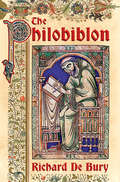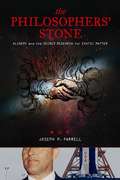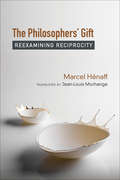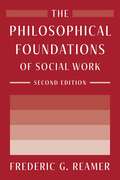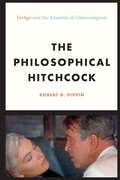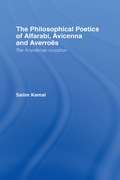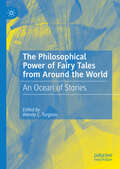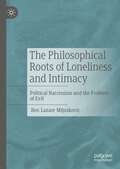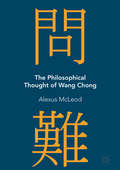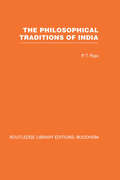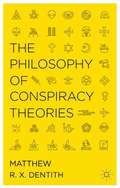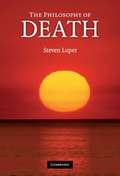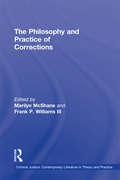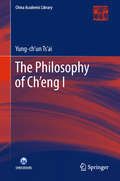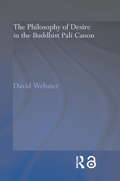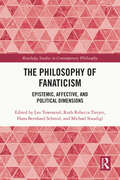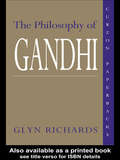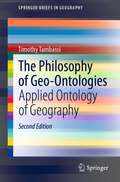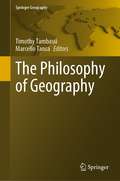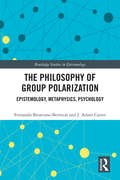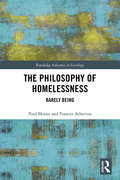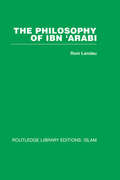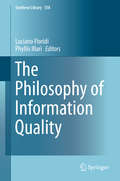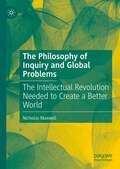- Table View
- List View
The Philistines and Aegean Migration at the End of the Late Bronze Age
by Assaf Yasur-LandauAssaf Yasur-Landau examines the early history of the biblical Philistines who were among the 'Sea Peoples' who migrated from the Aegean area to the Levant during the early twelfth century BC. Creating an archaeological narrative of the migration of the Philistines, he combines an innovative theoretical framework on the archaeology of migration with new data from excavations in Greece, Turkey, Cyprus, Syria, Lebanon, and Israel and thereby reconstructs the social history of the Aegean migration to the southern Levant. The author follows the story of the migrants from the conditions that caused the Philistines to leave their Aegean homes, to their movement eastward along the sea and land routes, to their formation of a migrant society in Philistia and their interaction with local populations in the Levant. Based on the most up-to-date evidence, this book offers a new and fresh understanding of the arrival of the Philistines in the Levant.
The Philobiblon: A Treatise On The Love Of Books
by Richard De Bury"Will always hold an honorable place for bibliophiles." — The University of Chicago PressOne of the earliest treatises on the value of preserving neglected manuscripts, building a library, and book collecting, Richard De Bury's The Philobiblon was written in 1345 and circulated widely in manuscript form for over a century. The first printed edition appeared in Cologne in 1473, and several others soon followed as the invention of the printing press spread throughout the late Medieval world. The chapter titles of this legendary work reflect its nature, combining the author's love for and commitment to the importance of books and the knowledge they contain with thoughts on collecting them, lending them, teaching with them, and simply enjoying them: "That the Treasure of Wisdom is chiefly contained in books," "What we are to think of the price in the buying of books," "Who ought to be special lovers of books," and "Of the manner of lending all our books to students." The Prologue ends with the following thought: "And this treatise (divided into twenty chapters) will clear the love we have had for books from the charge of excess, will expound the purpose of our intense devotion, and will narrate more clearly than light all the circumstances of our undertaking. And because it principally treats of the love of books, we have chose after the fashion of the ancient Romans fondly to name it by a Greek word, Philobiblon."This volume offers modern bibliophiles a splendid edition of one of the first books ever to study, define, and, above all, praise their passion: the all-encompassing love of books.
The Philosopher's Stone
by Joseph P. FarrellProlific author Joseph P. Farrell, who commands a growing and devoted audience on Coast to Coast AM, Erskine Overnight, and other programs, initiates his Feral House association with The Philosopher's Stone, in which he demonstrates the connections of modern physics and ancient alchemy by investigating monatomic gold, the work of Russian astrophysicist Nikolai Kozyrev, and the fuel for the mysterious Nazi "Bell" device, Serum 525.Farrell's previous books investigated the scientific and astronomical implications of ancient monuments and the secret space operations of the Nazis who were brought into NASA to continue their highly classified research as a result of "Operation Paperclip." The author is now working with best-selling authors Richard C. Hoagland and Mike Bara on a book about secret American space programs.Chapters within The Philosopher's Stone include:The alchemical view of the physical mediumTransmutations and timeDavid Hudson's Monatomic GoldThe Platinum Group Metals and High Spin State AtomsAn Alchemical Examination of the Soviet Red Mercury LegendThe Physics of Rotation: Dr. Nikolai KozyrevH-Bombs and Torsion PhysicsThe Greater German Alchemical ReichNazis, Lasers, and Isotope EnrichmentThe Bell and Serum 525
The Philosophers' Gift: Reexamining Reciprocity
by Marcel HénaffWinner, French Voices Award for excellence in publication and translation.When it comes to giving, philosophers love to be the most generous. For them, every form of reciprocity is tainted by commercial exchange. In recent decades, such thinkers as Derrida, Levinas, Henry, Marion, Ricoeur, Lefort, and Descombes, have made the gift central to their work, haunted by the requirement of disinterestedness.As an anthropologist as well as a philosopher, Hénaff worries that philosophy has failed to distinguish among various types of giving. The Philosophers’ Gift returns to Mauss to reexamine these thinkers through the anthropological tradition. Reciprocity, rather than disinterestedness, he shows, is central to ceremonial giving and alliance, whereby the social bond specific to humans is proclaimed as a political bond. From the social fact of gift practices, Hénaff develops an original and profound theory of symbolism, the social, and the relationship between self and other, whether that other is an individual human being, the collective other of community and institution, or the impersonal other of the world.
The Philosophical Foundations of Social Work
by Frederic G. ReamerSocial work rests on complex philosophical assumptions that should be central to practice, education, and training. In this book, Frederic G. Reamer explores how these issues bear on the purpose, methods, and perspectives of social work and their far-reaching implications for practice and scholarship.Reamer examines major themes across the domains of moral and political philosophy, logic, epistemology, and aesthetics. He raises questions such as: How can ethical theories inform social workers’ moral judgments? In what ways are canons of inductive and deductive logic relevant to social workers’ thinking about their work? To what extent can scientific inquiry help social workers understand the nature and effect of their interventions? How can concepts related to aesthetics shed light on the nature of social work? Reamer’s nuanced inquiry never loses sight of the concrete applications of philosophy to social work practice with individuals, families, groups, organizations, and communities, or to broader goals of social change.This second edition of The Philosophical Foundations of Social Work is revised and updated throughout to address contemporary challenges. It focuses especially on newer thinking about the role of non-Western philosophical perspectives and the relevance of philosophy to social workers’ commitments to multiculturalism, feminism, and antiracism.
The Philosophical Hitchcock: “Vertigo” and the Anxieties of Unknowingness
by Robert B. PippinOn the surface, The Philosophical Hitchcock: Vertigo and the Anxieties of Unknowingness, is a close reading of Alfred Hitchcock’s 1958 masterpiece Vertigo. This, however, is a book by Robert B. Pippin, one of our most penetrating and creative philosophers, and so it is also much more. Even as he provides detailed readings of each scene in the film, and its story of obsession and fantasy, Pippin reflects more broadly on the modern world depicted in Hitchcock’s films. Hitchcock’s characters, Pippin shows us, repeatedly face problems and dangers rooted in our general failure to understand others—or even ourselves—very well, or to make effective use of what little we do understand. Vertigo, with its impersonations, deceptions, and fantasies, embodies a general, common struggle for mutual understanding in the late modern social world of ever more complex dependencies. By treating this problem through a filmed fictional narrative, rather than discursively, Pippin argues, Hitchcock is able to help us see the systematic and deep mutual misunderstanding and self-deceit that we are subject to when we try to establish the knowledge necessary for love, trust, and commitment, and what it might be to live in such a state of unknowingness. A bold, brilliant exploration of one of the most admired works of cinema, The Philosophical Hitchcock will lead philosophers and cinephiles alike to a new appreciation of Vertigo and its meanings.
The Philosophical Poetics of Alfarabi, Avicenna and Averroes: The Aristotelian Reception (Culture and Civilization in the Middle East)
by Salim KemalThis book examines the studies of Aristotle's Poetics and its related texts in which three Medieval philosophers - Alfarabi, Avicenna and Averroes - proposed a conception of poetic validity (beauty), and a just relation between subjects in a community (goodness). The work considers the relation of the Poetics to other Aristotelian texts, the transmission of these works to the commentators' context, and the motivations driving the commentators' reception of the texts. The book focuses on issues central to the classical relation of beauty to truth and goodness.
The Philosophical Power of Fairy Tales from Around the World: An Ocean of Stories
by Wendy C. TurgeonThis book analyzes the philosophical dimensions of fairy tales from cultures all around the world. Though there is a robust literature that analyzes fairy tales from sociological and historical perspectives and psychology has also focused on mining these stories for insights, this book is unique in its focus on fairy tales as philosophical texts. Bringing together scholars from a truly global range of philosophical and literary traditions, this book shows that fairy tales encapsulate the human dilemma of living in the world, trying to make meaning, and charting a course through good and evil. The book's contributors study fairy tales from East Africa, Australia, Jewish Eastern Europe, Iran, Korea, Turkey, Indigenous North America, and beyond. Ending with a section on Philosophy for Children, this book will also be of interest to scholars and practitioners in this subfield, in addition to scholars of philosophy and popular culture and philosophy of literature.
The Philosophical Roots of Loneliness and Intimacy: Political Narcissism and the Problem of Evil
by Ben Lazare MijuskovicBen Lazare Mijuskovic has spent 40 years researching theories of consciousness in relation to human loneliness, using an interdisciplinary and "history of ideas" approach. In this book, Mijuskovic combines Kant's theory of reflexive self-consciousness with Husserl's transcendent principle of intentionality to describe the distinctive philosophical, psychological, and sociological roots of loneliness and intimacy. He argues that loneliness is innate, unavoidable, and constituted by the structure of self-consciousness itself.
The Philosophical Thought of Wang Chong
by Alexus McLeodThis book is a study of the methodological, metaphysical, and epistemological work of the Eastern Han Dynasty period scholar Wang Chong. It presents Wang’s philosophical thought as a unique and syncretic culmination of a number of ideas developed in earlier Han and Warring States philosophy. Wang’s philosophical methodology and his theories of truth, knowledge, and will and determinism offer solutions to a number of problems in the early Chinese tradition. His views also have much to offer contemporary philosophy, suggesting new ways of thinking about familiar problems. While Wang is best known as a critic and skeptic, Alexus McLeod argues that these aspects of his thought form only a part of a larger positive project, aimed at discerning truth in a variety of senses.
The Philosophical Traditions of India (Routledge Library Editions: Buddhism)
by P T RajuThis volume conveys that Indian philosophy has intricate and complex metaphysical and epistemological theories as other philosophies and that these disciplines – epistemology and metaphysics – are an essential part of Indian philosophy.
The Philosophy Of Conspiracy Theories
by Matthew R. X. DentithConspiracy theories are a popular topic of conversation in everyday life but are often frowned upon in academic discussions. Looking at the recent spate of philosophical interest in conspiracy theories, The Philosophy of Conspiracy Theories looks at whether the assumption that belief in conspiracy theories is typically irrational is well founded
The Philosophy Of Death
by Steven LuperThe Philosophy of Death is a discussion of the basic philosophical issues concerning death, and a critical introduction to the relevant contemporary philosophical literature. Luper begins by addressing questions about those who die: What is it to be alive? What does it mean for you and me to exist? Under what conditions do we persist over time, and when do we perish? Next, he considers several questions concerning death, including: What does dying consist in; in particular, how does it differ from ageing? Must death be permanent? By what signs may it be identified? Is death bad for the one who dies? If so why? Finally he discusses whether, and why, killing is morally objectionable, and suggests that it is often permissible; in particular, (assisted) suicide, euthanasia and abortion may all be morally permissible. His book is a lively and engaging philosophical treatment of a perennially fascinating and relevant subject.
The Philosophy and Practice of Corrections (Criminal Justice: Contemporary Literature in Theory and Practice #4)
by Frank P. Williams III Marilyn McShanePublished in 1997, The Philosophy and Practice of Corrections is a valuable contribution to the field of Sociology & Social Policy.
The Philosophy of Ch’eng I (China Academic Library)
by Yung-Ch’un Ts’aiThis book offers a comprehensive account of the great Neo-Confucian Master Cheng I (1033-1107), showing his philosophical ideas in a modern light. It systematically examines Cheng’s extensive literature and provides an ingenious interpretation of Cheng’s social and political views. The author, Yung-ch’un Ts’ai, was a respected scholar of sociology and theology in 20th century China.
The Philosophy of Desire in the Buddhist Pali Canon (Routledge Critical Studies in Buddhism)
by David WebsterDavid Webster explores the notion of desire as found in the Buddhist Pali Canon. Beginning by addressing the idea of a 'paradox of desire', whereby we must desire to end desire, the varieties of desire that are articulated in the Pali texts are examined. A range of views of desire, as found in Western thought, are presented as well as Hindu and Jain approaches. An exploration of the concept of ditthi(view or opinion) is also provided, exploring the way in which 'holding views' can be seen as analogous to the process of desiring. Other subjects investigated include the mind-body relationship, the range of Pali terms for desire, and desire's positive spiritual value. A comparative exploration of the various approaches completes the work.
The Philosophy of Fanaticism: Epistemic, Affective, and Political Dimensions (Routledge Studies in Contemporary Philosophy)
by Leo TownsendThe essays in this volume explore some of the disconcerting realities of fanaticism, by analyzing its unique dynamics, and considering how it can be productively confronted. The book features both analytic and continental philosophical approaches to fanaticism. Working at the intersections of epistemology, philosophy of emotions, political philosophy, and philosophy of religion, the contributors address a range of questions related to this increasingly relevant, yet widely neglected topic. What are the distinctive features of fanaticism? What are its causes, motivations, and reasons? In what ways, if at all, is fanaticism epistemically, ethically, and politically problematic? And how can fanaticism be combatted or curtailed? The Philosophy of Fanaticism will be of interest to scholars and advanced students working in epistemology, philosophy of religion, philosophy of emotions, moral psychology, and political philosophy.
The Philosophy of Gandhi: A Study of his Basic Ideas
by Glyn RichardsThis book seeks to give a coherent account of Gandhi's basic ideas, demonstrating the importance of Hindu thought and the centrality of his concept of Truth.
The Philosophy of Geo-Ontologies: Applied Ontology of Geography (SpringerBriefs in Geography)
by Timothy TambassiPlaced at the intersection among philosophy, geography, and computer science, the domain of investigation of applied ontology of geography ranges from making explicit assumptions and commitments of geography as a discipline, to the theoretical and technical needs of geographical/IT tools, such as GIS and geo-ontologies. Such a domain of investigation represents the central topic of discussion of this book, which intends: 1) to provide an overview of the mutual interactions among the disciplines encompassed in the domain; 2) to discuss notions such as spatial representation, boundaries, and geographical entities that constitute the main focus of the (philosophical) ontology of geography; 3) to propose a geographical classification of geo-ontologies in response to their increasing diffusion within the contemporary debate, as well as to show what ontological categories best systematize their contents. The second edition of the book differs from the first one as it offers a broader analysis of the (philosophical) ontology of geography: an analysis that is no more limited to the theoretical need of geo-ontologies.
The Philosophy of Geography (Springer Geography)
by Timothy Tambassi Marcello TancaThe relationship between geography and philosophy is still largely in need of being explored. Geographers and philosophers share the responsibility for that. On the one hand, geographers have considered as a dangerous deviation any attempt to elaborate an image of the Earth which was not a mere replica of a cartographic representation. On the other hand, philosophers have generally been uninterested in a discipline offering little chance for critical reflection. In light of these considerations, the purpose of this book is to identify some fundamental philosophical issues involved in the reflection of geography by adopting a perspective which looks at the discipline with a specific focus on its fundamental concepts and distinctions.
The Philosophy of Group Polarization: Epistemology, Metaphysics, Psychology (Routledge Studies in Epistemology)
by J. Adam Carter Fernando Broncano-BerrocalGroup polarization—the tendency of groups to incline toward more extreme positions than initially held by their individual members—has been rigorously studied by social psychologists, though in a way that has overlooked important philosophical questions. This is the first book-length treatment of group polarization from a philosophical perspective. The phenomenon of group polarization raises several important metaphysical and epistemological questions. From a metaphysical point of view, can group polarization, understood as an epistemic feature of a group, be reduced to epistemic features of its individual members? Relatedly, from an epistemological point of view, is group polarization best understood as a kind of cognitive bias or rather in terms of intellectual vice? This book compares four models that combine potential answers to the metaphysical and epistemological questions. The models considered are: group polarization as (i) a collective bias; (ii) a summation of individual epistemic vices; (iii) a summation of individual biases; and (iv) a collective epistemic vice. Ultimately, the authors defend a collective vice model of group polarization over the competing alternatives. The Philosophy of Group Polarization will be of interest to students and researchers working in epistemology, particularly those working on social epistemology, collective epistemology, social ontology, virtue epistemology, and distributed cognition. It will also be of interest to those working on issues in political epistemology, applied epistemology, and on topics at the intersection of epistemology and ethics.
The Philosophy of Homelessness: Barely Being (Routledge Advances in Sociology)
by Paul Moran Frances AthertonThe Philosophy of Homelessness is borne out of a five-year ethnographic research project involving being with a group of chronically homeless people in Chester. A small city located in the northwest of the UK, Chester is economically supported by its heritage and the tourism that this attracts. In an obvious sense, the awkwardness of the phrase ‘being with a group of chronically homeless people’ is regrettable. Nevertheless, this unfortunately self-conscious phrase is significant, with its importance residing in the word and concept of ‘being’. Whilst philosophical understandings of being are often thought about in rather abstract terms, The Philosophy of Homelessness explores the daily experience of chronic homelessness from a perspective that renders its ontological impress in ways that are explicitly felt, often in forms that are overtly political and exclusionary in character, especially in terms of identity and belonging within the city. Themes that emerge from the work, which coalesce around living in the margins of the city and experiencing only the shadow of the right to be, include: the economy of chronic addiction and its impact upon the body; the relationship between chronic homelessness and the law; and chronic homelessness and identity and desire. These themes are explored through a number of thinkers, though predominantly: Nietzsche, Lacan, Bourdieu and Kristeva. This work is likely to be of interest to anyone working in the fields of: criminology; sociology, especially those areas concerned with marginalised groups; and philosophy in its socially and politically engaged forms; as well as to those with an interest in homelessness.
The Philosophy of Ibn 'Arabi
by Rom LandauOriginally published 1959. Ibn ‘Arabi is one of the most significant thinkers of Islam. Yet he is far less widely known in the Western world than Ibn Sina, Al-Ghazali, Ibn Rushd or even Al Farabi. This volume provides original interpretations and illustrations to some of Ibn ‘Arabi’s ideas, as well as including a number of his texts in English.
The Philosophy of Information Quality (Synthese Library #358)
by Luciano Floridi Phyllis IllariThis work fulfills the need for a conceptual and technical framework to improve understanding of Information Quality (IQ) and Information Quality standards. The meaning and practical implementation of IQ are addressed, as it is relevant to any field where there is a need to handle data and issues such as accessibility, accuracy, completeness, currency, integrity, reliability, timeliness, usability, the role of metrics and so forth are all a part of Information Quality.In order to support the cross-fertilization of theory and practice, the latest research is presented in this book. The perspectives of experts from beyond the origins of IQ in computer science are included: library and information science practitioners and academics, philosophers of information, of engineering and technology, and of science are all contributors to this volume.The chapters in this volume are based on the work of a collaborative research project involving the Arts and Humanities Research Council and Google and led by Professor Luciano Floridi, University of Oxford.This work will be of interest to anyone handling data, including those from commercial, public, governmental and academic organizations. The expert editors’ contributions introduce issues of interest to scientists, database curators and philosophers, even though the issues may be disguised in the language and examples common to a different discipline.
The Philosophy of Inquiry and Global Problems: The Intellectual Revolution Needed to Create a Better World
by Nicholas MaxwellUniversities have long been dominated by a philosophy of inquiry that may be called knowledge-inquiry. This holds that, in order to do justice to the basic humanitarian aim of helping to promote human welfare, academic inquiry must, in the first instance, seek knowledge and technological know-how. First, knowledge is to be acquired; once acquired, it can be applied to help promote human welfare. But this philosophy of knowledge-inquiry is an intellectual and humanitarian disaster. It violates three of the four most elementary rules of rational problem solving conceivable, and as a result fails to give priority to the task of helping humanity resolve those conflicts and problems of living, such as the climate and nature crises, that need to be resolved if we are to make progress to a better world – a world in which there is peace, democracy, justice, liberty, and sustainable prosperity, for all. Very few academics today are aware of this rationality scandal. We urgently need to bring about a revolution in universities around the world, wherever possible, so that academic inquiry puts all four rules of rational problem solving into practice, and becomes rationally devoted to helping humanity learn how to make progress towards a better world. Knowledge-inquiry needs to become wisdom-inquiry, rationally devoted to helping humanity create a wiser world.

